By the month of April, spring is well underway – the countryside is buzzing with wildlife and many plant species are in bloom.
Woodland flowers, such as bluebells and wood anemones, cover the forest floor, eager to make the most of the window of sunlight before the tree canopies burst into leaf and block out the sun again.
It's a great month for foraging, too. From the pungent wild garlic plant to common mallow, why not see which plants you can identify, gather and use on your next spring walk?
Here's our guide to what to forage in April in Britain, plus how to identify and harvest each plant, where to find it, and how to use it.

Where to forage in April
The first flush of tender green leaves is growing prolifically by now. This makes April a great time to forage for spring greens in woodlands and forests and in the countryside to use to give your home-cooked recipes a local, seasonal flavour.
Best plants to forage in April
Wild garlic, Allium ursinum
Parts used: leaves, flowers and seeds
Also known as ramsons or bear leek, wild garlic is an edible plant that emerges in ancient woodlands April and can be foraged right through summer. Use it when cooking to add great flavour to your favourite recipes.
The leaves, flowers and seeds are edible. The pungent-smelling leaves are delicious added to soups, sauces and pesto. Leaves appear in March and are best picked when young, before the plant flowers. The flowers emerge from April to June and can add a potent garlic punch and a pretty garnish to salads and sandwiches.
Discover more with our wild garlic guide
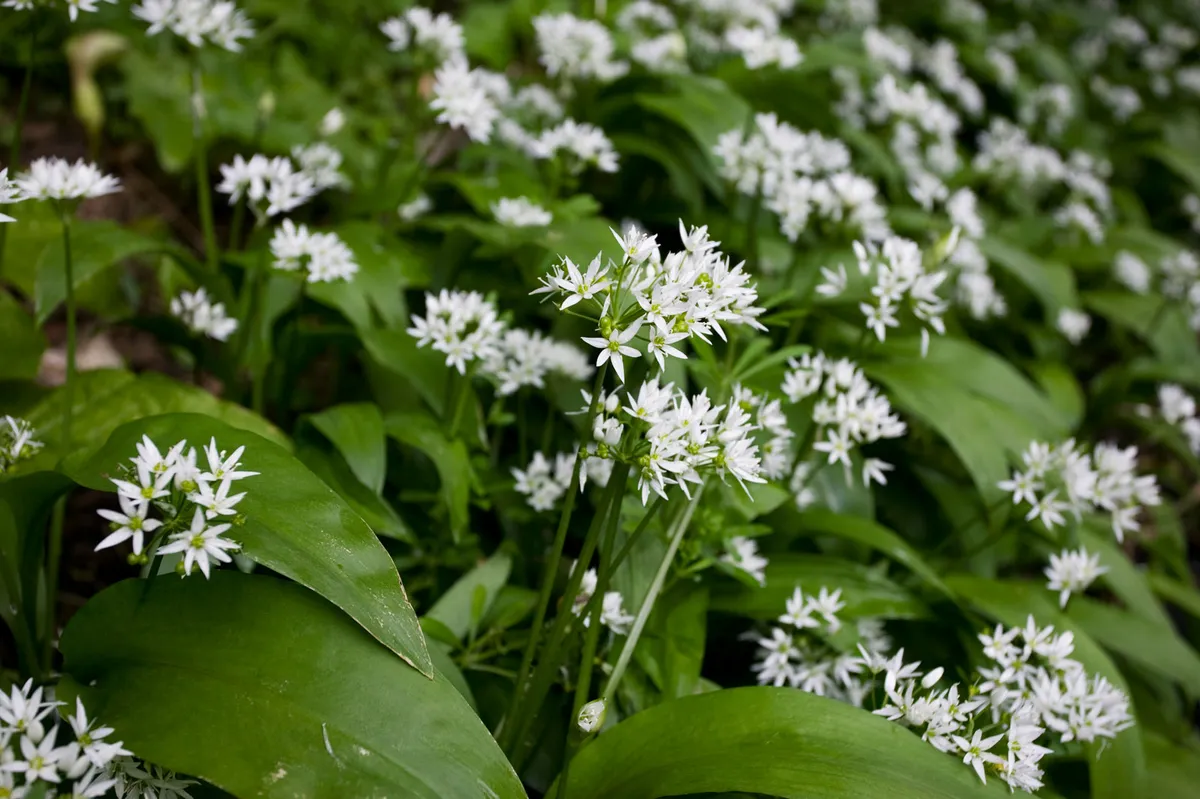
Dandelion, Taraxacum officinale
Parts used: flowers
April is the month when dandelions really explode across fields, verges, scrubland and any patch of your garden they can set down roots in. You've probably heard of dandelion coffee, but did you know about dandelion wine?
The petals of dandelions are also great for making sweets and puddings, and look lovely sprinkled on a cake.
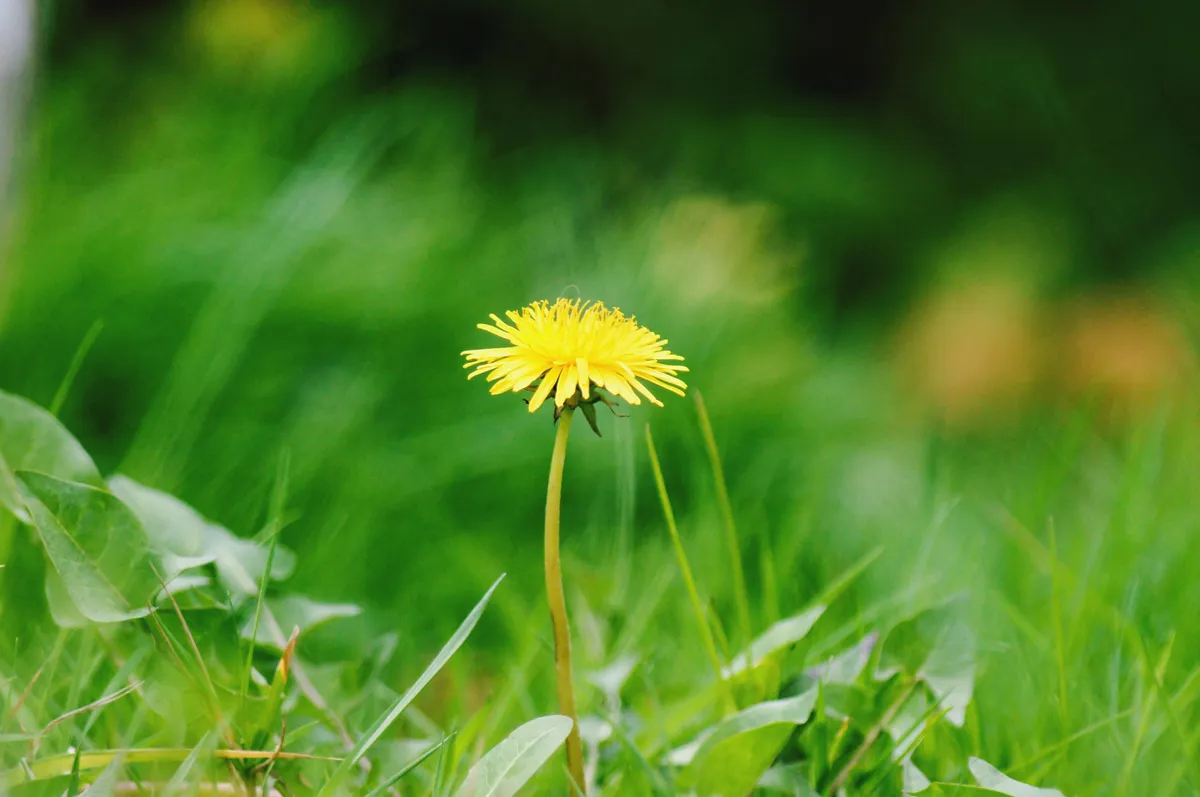
Birch: silver, betula pendula, and downy, Betula pubescens
Parts used: young leaves
This tree is native to the northern hemisphere, which may be why it is one of the most hardy and resilient trees in winter.
In spring, young birch leaves contain especially high amounts of flavonoids, saponins and tannins – all valuable nutrients. These leaves are one of the first to unfurl and can be used to make a peppery, minty tea, rich in vitamin C.
Birch leaves are simple with round corners and serrated edges. The leaves of downy birch are rounder in shape than those of silver birch, but both can be found in the UK.
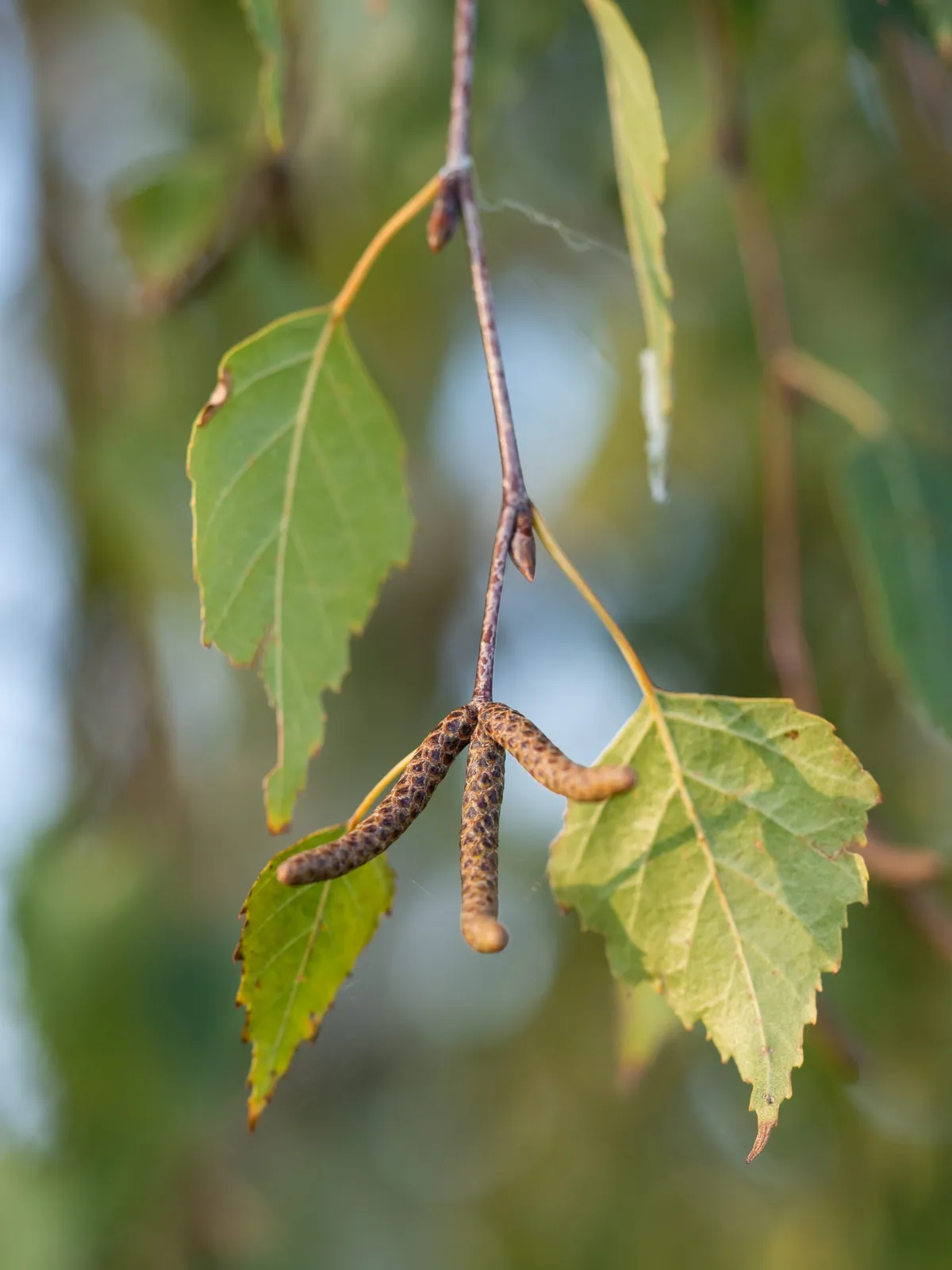
Hairy bittercress, Cardamine hirsuta
Parts used: leaves
A member of the mustard family and related to watercress, hairy bittercress is, in fact, not very hairy or bitter. You may need a magnifying glass to see the small leaf hairs and the taste is more peppery than bitter, like a cross between rocket and watercress.
This common, low-lying wild salad plant is found growing on bare soil, in grass, cracks on paths and growing in walls, and can be foraged from autumn through to spring.
Harvest bittercress with scissors then pull off the leaves. Use the leaves in salads, sandwiches, as a garnish, or in pesto.
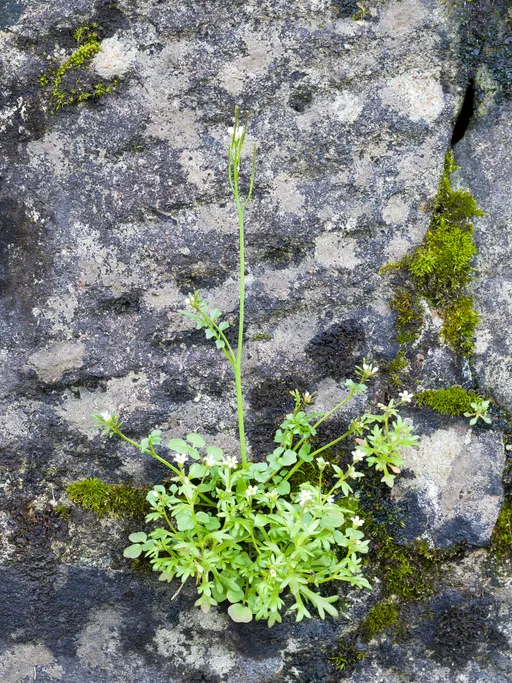
Blackcurrant leaves, Ribes nigrum
Parts used: leaves, and fruits in summer
Blackcurrant is a woody medium-sized shrub native to Europe and Asia, which is grown for its small black berries, but it is also highly valued for its leaves. They are excellent at helping to support normal digestive function, and can be a useful appetite stimulant in times of illness.
A small handful of fresh, young leaves can be made into a tasty tea with antimicrobial and anti-inflammatory actions. They have palmate lobes and a serrated margin. All parts of the plant are strongly aromatic.

Common mallow, Malva sylvestris
Parts used: leaves (flowers in summer and seeds in autumn)
This large, spreading plant can be found on roadside verges and along footpaths and its leaves can be used to make dolmas and as a replacement for spinach in almost any recipe. Adding the leaves to soups helps thicken them.
Common mallow leaves contain more than double the amount of protein per 100g than cultivated vegetables, such as spinach and kale, and contain fibre, calcium, magnesium, zinc and essential vitamins A, B, C and E.
Identifiable by its five-lobed leaves – which appear on the stems – and more rounded leaves at the base of the plant. Its pink flowers appear in June.
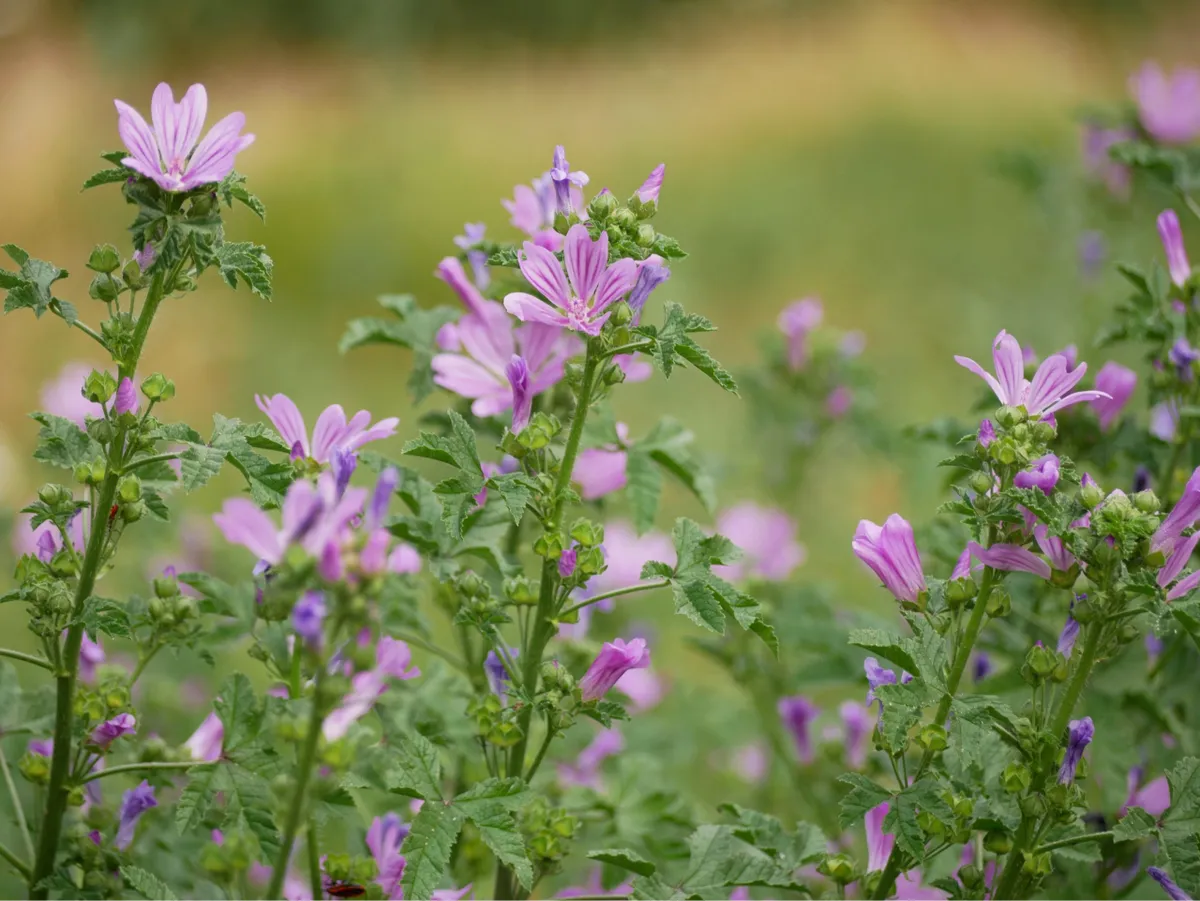
Cow parsley, Anthriscus sylvestris
Parts used: leaves, stems and roots
Cow parsley is a member of the carrot family and is often confused with Queen Anne’s Lace, although they aren’t the same thing.
The leaves and stems can be used fresh or dried. It’s an excellent herb to give your dishes a bit of a twist.

Garlic mustard, Alliaria petiolata
Parts used: leaves
Garlic mustard flowers in April, it’s also known as Jack-by-the-hedge and hedge garlic. Use it in sauces, dressings and soups to add a taste of peppery garlic.

Medicinal herbs to forage in April
Ground ivy, Glechoma hederacea
Parts used: leaves and flowers
This utterly delicate fairy-like flower is a common perennial that's found in Britain, west Ireland and the Scottish Highlands. It's mostly in semi-shaded woods, hedgerows and grassland.
When used medicinally, this plant is a great expectorant and catarrh-clearing herb with additional anti-inflammatory, antioxidant and antibacterial properties.
To identify, look for its crinkly, opposite, heart-shaped leaves and slightly hairy stems with two to four purple flowers. It has a slightly musty, but minty, smell when its leaves are crushed.

Plantain, Plantago major
Parts used: leaves
In Britain, this plant is sometimes called ‘angel’s harps’ as, when the leaves are pulled apart, the fibres create a harp-like formation. This plant is common almost everywhere but the most acid grassland, appearing in meadows, grazed pasture, lawns, sea cliffs and sand dunes.
With anti-inflammatory properties, it is a versatile wound-healer and used extensively in herbal first aid for boils, splinters, pus, and dirty and infected wounds. It is also a restorative herb for mucous membranes of the respiratory system, which helps with many types of allergies.
Its leaves are broad, large and oval with wavy edges and between five and nine distinct veins running through the length of the leaves.
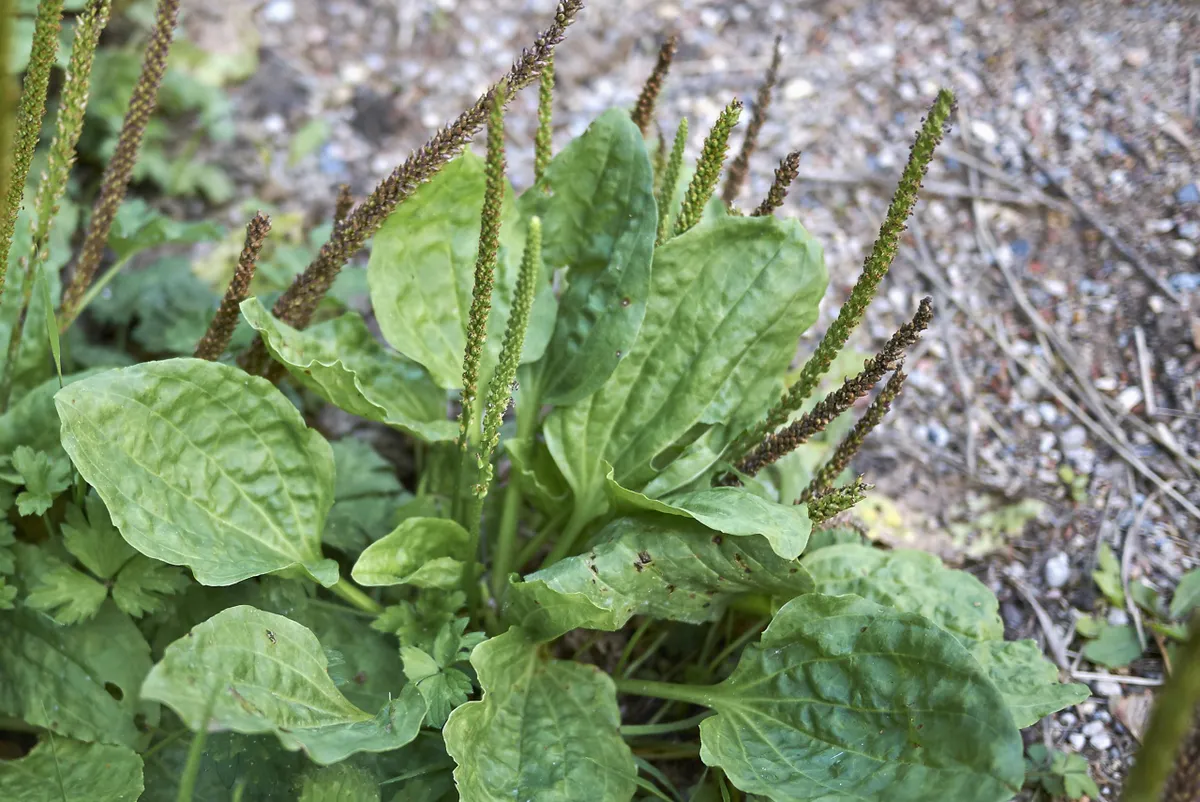
Main image: wild garlic. Credit: Getty

